NGL Publications and Working Papers
A population ecology of network domains
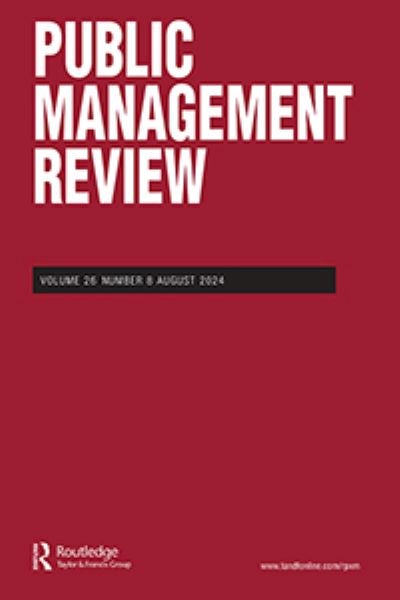
A population ecology of network domains
by Branda Nowell and Kate Albrecht
Abstract: Purpose-oriented networks (PONs) are a crucial and prevalent forum for addressing complex public issues. Using a longitudinal bipartite dataset of 74 PONs nested in three different geographic areas, we test a series of hypotheses, based in population ecology theories, concerning the impact of domain-level dynamics on network-level outcomes. Findings offer substantial support for, and insight into, the relevance of population-level dynamics in explaining organizational, network, and domain-level changes over time. Findings further offer practical insight and a cautionary tale for public and philanthropic initiatives that incentivize or mandate the formation of new PONs in a network domain.
Shapeshifting to address complexity: Advancing a typology of network evolution and transformation
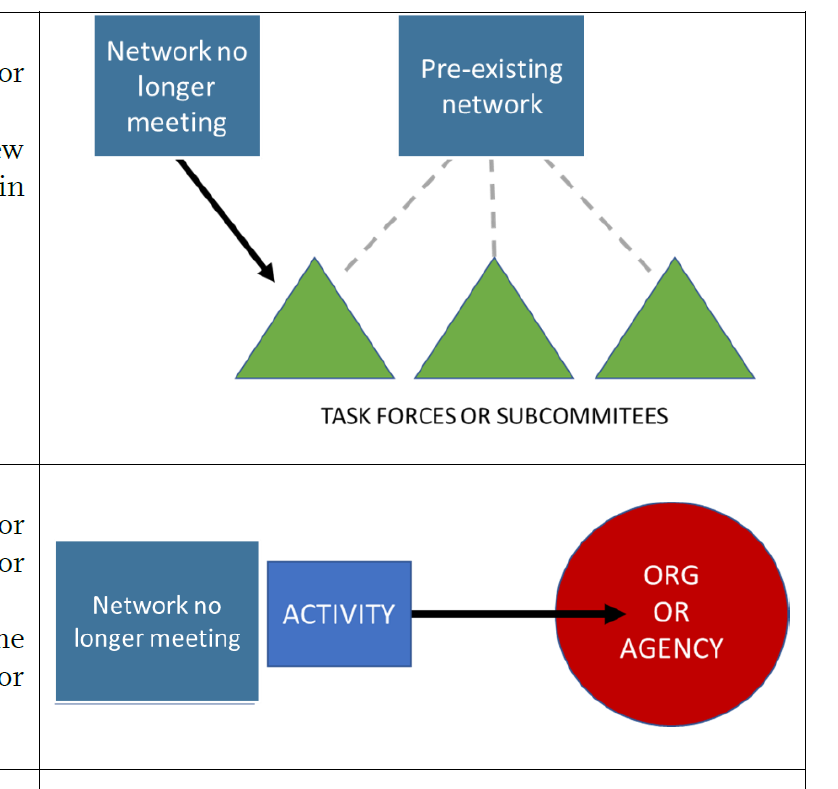
Shapeshifting to address complexity: Advancing a typology of network evolution and transformation
Abstract: In practice, health and social services are delivered through purpose-oriented networks (PONs) that are often favored by government and philanthropic investment as an effective means for collectively solving complex social problems. Current theories examine the evolution of these groups by resting on the traditional organizational forms of market, hierarchy, and network, without a consideration of trajectories that show movement between organizational forms over time. This article utilizes the network itself as the unit of analysis within a larger network domain to examine the most common trajectories and changes in organizational forms over time. To date, little theory has been developed or applied to account for both endogenous characteristics and exogenous system-wide dynamics and their longitudinal effects on networks. As is appropriate in the early stages of developing new theories, this article addresses the foundational steps of first clarifying the phenomenon of interest with the creation of a typology of the ways in which networks evolve as organizational forms and suggesting future network-level and network domain research agendas.
Exploring Accountability Choices in Service Contracts for Collaborative Public Safety Services Provision

by Shuwen Zhang and Mashal-E-Zehra
Abstract: There is limited evidence on how local governments adopt formal contractual mechanisms to hold partners accountable and mitigate defection in the context of differing power dynamics. What kind of monitoring mechanisms do local governments choose to check opportunism and align incentives as they delegate service provision to another actor? Does the choice of monitoring mechanisms vary if the partner government is another local government, higher-level government, or a non-government actor? Does the choice of monitoring mechanisms used by local governments vary by the nature of service provision? To explore these questions, we examine a randomly selected sample of 163 public service contracts involving local governments in Iowa. Our findings suggest that the use of monitoring mechanisms is not homogenous and varies across different service areas and collaboration directions. In practice, our findings are useful for enhancing local governments’ internal contract management capacity for preventing contract failure, establishing accountability, and mitigating risk.
Environmental Justice through Community-Policy Participatory Partnerships

Environmental Justice through Community-Policy Participatory Partnerships
by Phillip A. Boda, Federica Fusi, Fabio Miranda, Gordon J. M. Palmer, Joel Flax-Hatch, Michael D. Siciliano, Apostolis Sambanis, Linda Johnson, Sybil Derrible, Michael Cailas
Abstract: Geographical information systems (GIS) are often used to design environmental justice (EJ) policy interventions. Leveraging GIS and other graphics, overburdened EJ communities can learn from maps that geographically link environmental burden (EB) and social disparity (SD) data. Visually representing EB and SD data concretizes the unjust distributions of environmental and broader inequitable societal policies. These maps can be used to efficaciously assess EJ disparities created by such policies through exploring socioeconomic characteristics with local communities. Given the great variation in how GIS EJ applications measure and visualize EB and SD, we present a community-based participatory design (CBPD) lens to collaboratively work across overburdened communities and support making EJ data accessible to all stakeholders. Our location proximity approach is a powerful way to assess overburdened EJ communities because it relies on user-predefined boundaries, and it doesn’t use a single fixed unit of reference to prioritize areas of intervention. Moreover, most areal unit applications use ordinal measures, such as percentiles, and multidimensional indexes, which are intelligible to understand by many residents. Leveraging a community-based participatory design methodology, we present our novel Proximity to Hazards Dashboard (PHD) that includes data on asphalt plants and industrial corridors, hazards often missing from state-level dashboards but very relevant for city policymaking, as well as more traditionally used environmental hazard sources. The use of the tool by policymakers and community members suggests that EJ categorization should focus less on procedural benchmarks and more on systemic change for policy impacts in ways that sustain the participatory nature of our approach.
Network structures and network effects across management and policy contexts: A systematic review
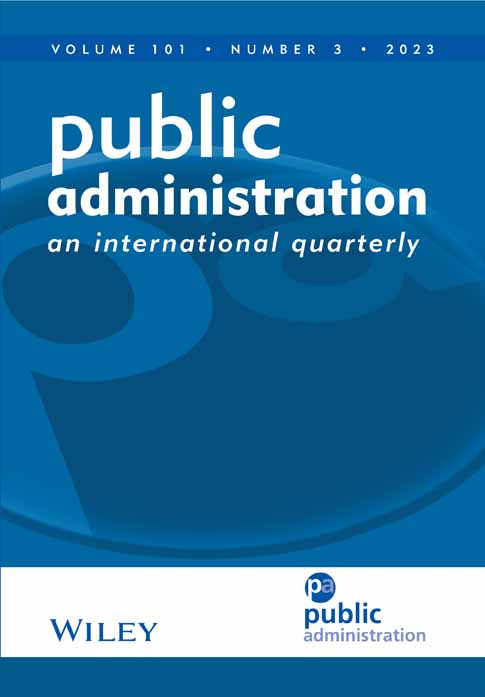
Network structures and network effects across management and policy contexts: A systematic review
by Qian Hu, Alejandra Medina, Michael D. Siciliano, Weijie Wang
Abstract: The wide application of networks in public administration has been driven by the practical need to address increasingly complex management and policy problems. To understand the outcomes of network structures, we reviewed empirical network research and examined the effects of six network structural properties across the five most studied policy domains. We found that certain structural properties such as global connectedness were consistently associated with positive network effects. Other structures such as brokerage/structural holes provided mixed findings, depending on the policy domain. Overall, our field is still in the early stages of developing research on network effects. The number of hypotheses on both node-level and system-level effects in any policy domain was relatively small. Most studies focused only on a single network at a single point in time, and thus very little work currently exists that examines the influence of contextual factors and their combined effects with network structures.
Local government managers are on the frontlines of climate change: Are they ready?
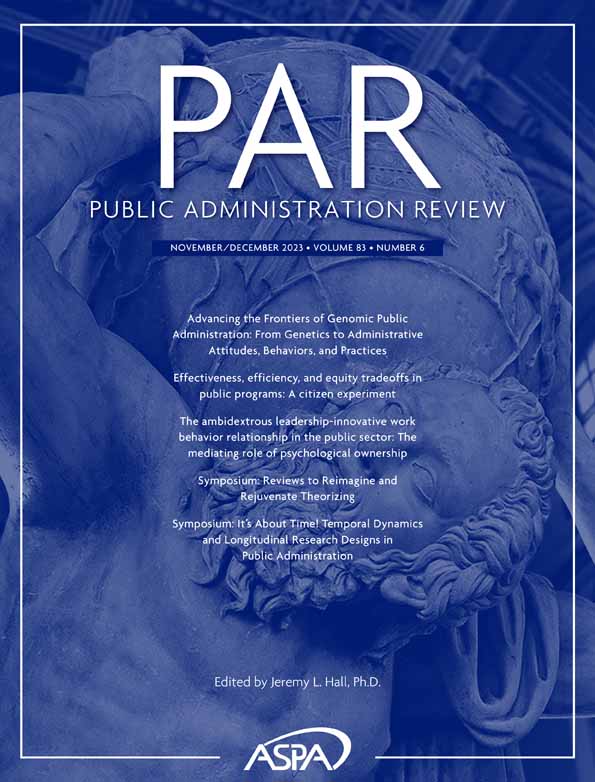
Local government managers are on the frontlines of climate change: Are they ready?
by Aaron Deslatte, Michael D. Siciliano, Rachel M. Krause
Abstract: State and local governments in the United States are the implementation agents for a vast swath of federal policies. As the country embarks on an unprecedented foray into fiscal federalism to combat climate change, we face a stark reality: many local governments are not ready. Drawing from recent data and evidence on local sustainability activities, we argue policy makers and managers at all levels of governance need to apply the lessons learned over the last two decades of subnational climate efforts. For local government managers working in the 21st century, climate change will likely be a defining social dilemma of their lifetimes. After years of inaction, the United States has taken a major step in trying to meet its greenhouse-gas mitigation pledges. But implementation requires understanding both the opportunities and opportunity costs posed by such generational investments.
Public School District Characteristics and the Formation of Longitudinal Interdistrict Collaboration Networks

by Victor G. Hugg, Michael D. Siciliano, Alan J. Daly
Abstract: School leaders rely on a number of collaborative policy tools to address fiscal and governance issues. While prior research has examined the dynamics and implications of research-practice and public-private partnerships, this study addresses a third form of collaboration: interdistrict cooperative agreements. Method: We develop a unique data set to study the formation of interdistrict agreements formed among 333 public school districts in the state of Iowa from 2008 through 2017. Aimed at reducing costs and improving student outcomes, these agreements collectively reflect an intergovernmental network that develops through predominantly bilateral agreements. We examine the factors and mechanisms that can facilitate and hinder interdistrict collaboration through a stochastic actor-oriented model for analyzing panels of network observations. Findings: We find both transitivity and popularity to be positively associated with the inclination to form cooperative relationships. Further, school districts are more likely to collaborate with districts that have a: (1) greater number of enrolled students; (2) smaller percentage of students that receive free or reduced-price lunch; (3) higher student-to-teacher ratio; and (4) lower average teacher salary. Propinquity and homophily effects are present as well: between any two given school districts, the likelihood of collaboration improves as geographical distance and the absolute difference in district-level measures decreases. Implications: Understanding the antecedents of education network formation enables examinations of how network characteristics can reduce the cost of providing education or improve student outcomes.
Applying the Repertory Grid Technique to Advance Nonprofit Collaboration: A Situational Theory of Partner Selection
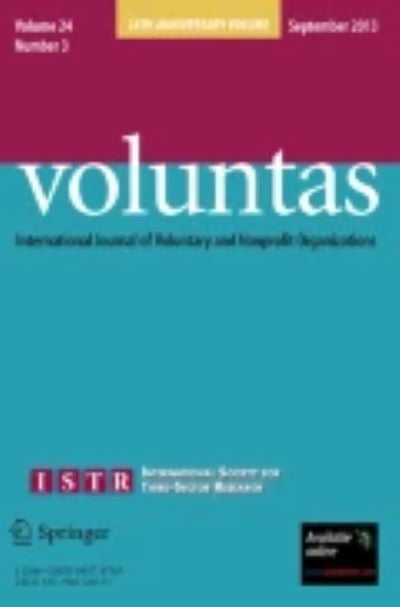
by Julie Langer, Michael D. Siciliano, Kelly LeRoux
Abstract: A truism of modern organizational life is that organizations collaborate. They may collaborate to meet client needs, acquire resources, or gain legitimacy. They may be required to collaborate by funders, but have little direction beyond this basic mandate. In this situation, how do managers choose collaborative partners? What is important to them and when is it important? While institutional and resource-dependence theories emphasize environmental factors driving collaboration, only recently has attention has been given to factors individuals identify as important when making choices about who to collaborate with, and for what purpose. This study uses the repertory grid technique, an innovative method based on personal construct theory, to explore what is important in the minds of nonprofit managers when navigating the world of collaboration and partner selection. The results reveal that managers prioritize different traits when selecting partners depending on the type of collaboration. We conclude with a review of current collaboration theories, where the findings from this study support and deviate from them and offer five new propositions about the complex, situation-dependent nature of partner selection in the minds of nonprofit practitioners.
Benchmarking Local Government Services: Applying an Issue-Based Approach
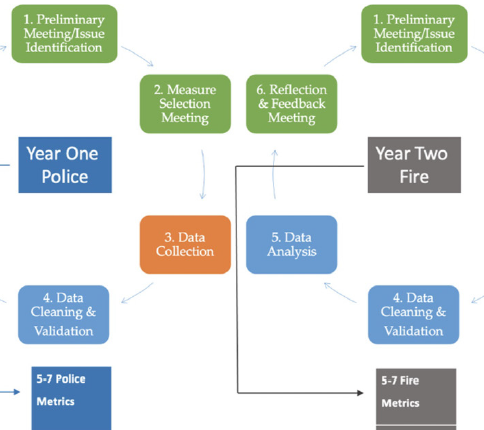
Benchmarking Local Government Services: Applying an Issue-Based Approach
by Saman Shafiq, Evgenia Kapousouz, Michael D. Siciliano, Jeffrey M. Gawel
Abstract: Local governments face revenue constraints and increasing demands for public service delivery. Confronted with fiscal pressures, cities, and counties engage in collaborative arrangements to save costs or improve service levels. However, the same pressures can also prevent them from seeking collaboration. Two distinguishable arguments in tension can be identified: fiscal stress as a driver or as a deterrent for collaboration. This study reconciles these contrasting views using longitudinal network analysis to examine how fiscal stress affects the likelihood of collaboration in four critical service areas. Results point toward fiscal stress negatively affecting collaboration in service areas when economies of scale are not achievable, and increasing the likelihood of collaboration in service domains where these scales are possible. Understanding when fiscal stress affects collaboration is particularly relevant given resource disparities at the local level. Such inequality can create reinforcing cycles of fiscal stress and reduced opportunities to collaborate in service delivery.
With a Little Help from My Friends? A Longitudinal Network Analysis on Fiscal Stress and Collaboration for Public Service Delivery

by Jose Sanchez, Jun Li, Aamer Shaheen Ranjha, Michael D. Siciliano
Abstract: Local governments face revenue constraints and increasing demands for public service delivery. Confronted with fiscal pressures, cities, and counties engage in collaborative arrangements to save costs or improve service levels. However, the same pressures can also prevent them from seeking collaboration. Two distinguishable arguments in tension can be identified: fiscal stress as a driver or as a deterrent for collaboration. This study reconciles these contrasting views using longitudinal network analysis to examine how fiscal stress affects the likelihood of collaboration in four critical service areas. Results point toward fiscal stress negatively affecting collaboration in service areas when economies of scale are not achievable, and increasing the likelihood of collaboration in service domains where these scales are possible. Understanding when fiscal stress affects collaboration is particularly relevant given resource disparities at the local level. Such inequality can create reinforcing cycles of fiscal stress and reduced opportunities to collaborate in service delivery.
Network Effects Research: A Systematic Review of Theoretical Mechanisms and Measures

Network Effects Research: A Systematic Review of Theoretical Mechanisms and Measures
by Alejandra Medina, Michael D. Siciliano, Weijie Wang, Qian, Hu
Abstract: This article contributes to the network effectiveness literature by identifying the theoretical mechanisms and network measures scholars in public administration and policy use to draw inferences between network structures and network effects. We conducted a systematic review of empirical network effects research in 40 public administration and policy journals from 1998 to 2019. We reviewed and coded 89 articles and described the main social theories used in the network effectiveness literature and the associated mechanisms that translate network structures to network effects. We also explain how scholars operationalize those theoretical mechanisms through network measures. Overall, our findings reflect that there is limited use of social theories for the explanation of network effects and in some cases, inconsistent use of network measures associated with theories. Moreover, we identify several challenges confronting network effects research. These challenges include the difficulty of isolating specific mechanisms related to a particular social theory, the use of network structures both as a mechanism and as a measure, and the lack of data to examine network dynamics and coevolution.
Network Interventions: Applying Network Science for Pragmatic Action in Public Administration and Policy

by Michael D. Siciliano, Travis Whetsell
Abstract: Public management and policy scholars have engaged in extensive development of theory and empirical study of networks and collaborative systems of governance. This scholarship has focused on understanding the mechanisms of network formation and the implications of network properties on individual and collective outcomes. Despite rich descriptive work and inferential analyses, little work has attempted to intervene in these systems. In this article, we develop the foundation for a new body of research in our field focused on network interventions. Network interventions are defined as the purposeful use of network data to identify strategies for accelerating behavior change, improving performance, and producing desirable outcomes (Valente, 2012). We extend network intervention strategies from the field of public health to public sector interorganizational and governance networks. Public sector actors have an interest in network interventions based on the fundamental pursuit of efficiency, effectiveness, and equity. Network interventions can increase the uptake of an organizational change among employees, improve the performance of a governance system, or promote the spread of a successful policy across jurisdictions. We provide scholars and practitioners with a useful way to conceptualize where, why, and how network interventions might be deployed in the pursuit of public value.
Networks in the Public Sector
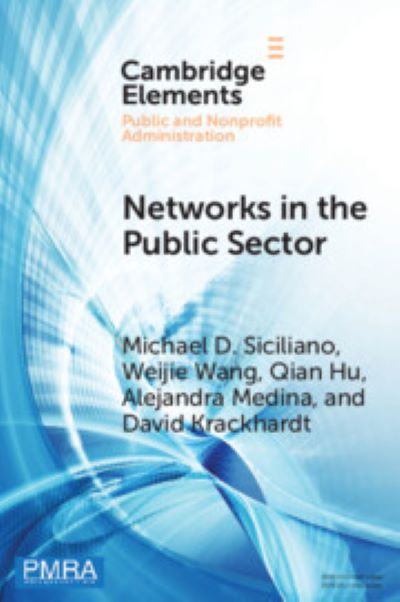
by Michael D. Siciliano, Weijie Wang, Qian Hu, Alejandra Medina, David Krackhardt
Abstract: Networks contain complex patterns of dependency and require multiple levels of analysis to explain their formation, structure, and outcomes. In this Element, the authors develop the Multilevel Network Framework. The framework serves as (i) a conceptual tool to think more deeply about network dynamics, (ii) a research tool to assist in connecting data, theory, and empirical models, and (iii) a diagnostic tool to analyze and categorize bodies of research. The authors then systematically review the network literature in public administration, management, and policy. They apply the Multilevel Network Framework to categorize the literature; identify significant gaps; examine micro, macro and cross-level relations; and examine relevant mechanisms and theories. Overall this Element helps readers to (i) understand and classify network research, (ii) use appropriate theoretical frameworks to examine network-related problems, (iii) understand how networks emerge and produce effects at different levels of analysis, and (iv) select appropriate empirical models.
Extending the Interdependence Theory to Local Public Service Provision: Evidence from Iowa
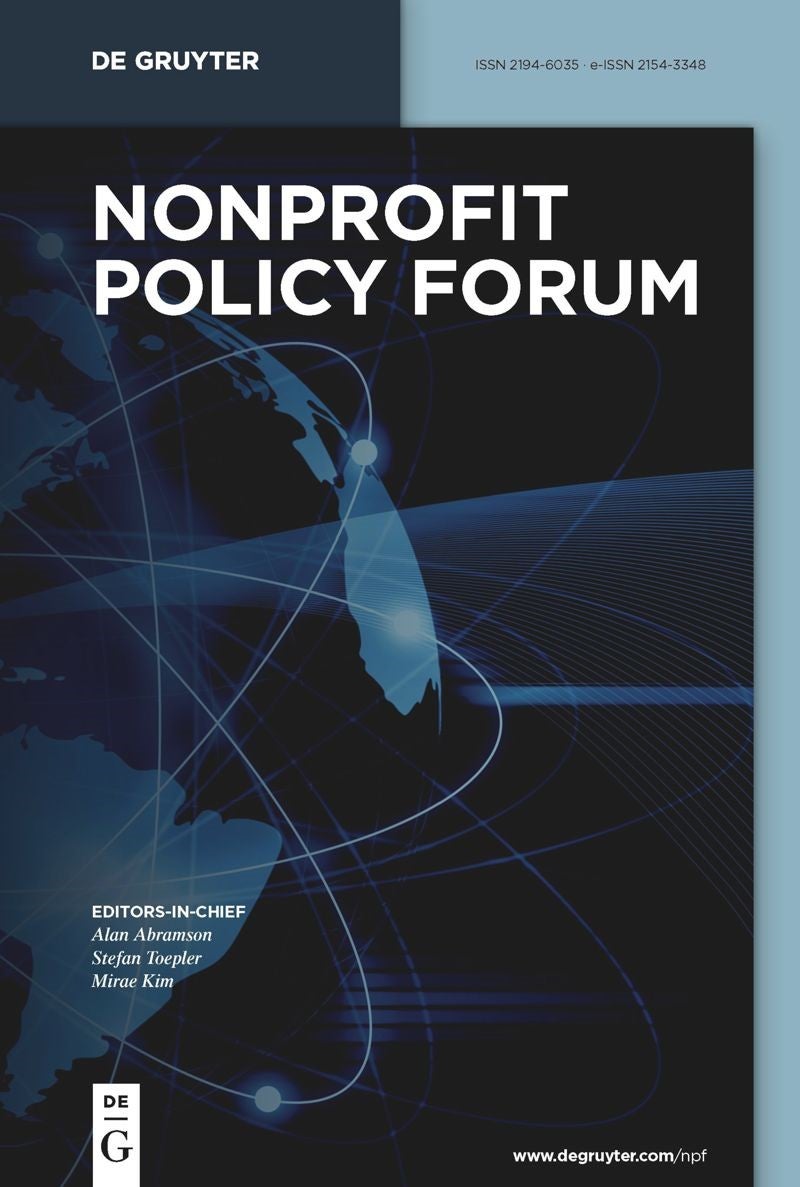
Extending the Interdependence Theory to Local Public Service Provision: Evidence from Iowa
by Saman Shafiq, Kate Albrecht, and Kelly LeRoux
Abstract: Lester Salamon’s interdependence theory has held up over time and across dozens of national contexts. However, the theory has largely been developed through data on government partnerships with nonprofits for providing social services. While government-nonprofit partnerships exist in various service areas and policy contexts, the theory has rarely been applied in less “traditional” service settings. We apply a mixed-method sequential research design – empirical analysis followed by a comparative case analysis – to understand the descriptive and explanatory power of Salamon’s interdependence theory and to differentiate its applications from other theories of government-nonprofit partnerships. Our analysis shows that nonprofits are extensively engaged in public service delivery at the local level, partnering with county and municipal governments to carry out essential public services well beyond the scope of social welfare functions and human services. Expanding the concept of interdependence theory, our findings further show that in local service delivery settings, there is a unique balancing of aspects of both voluntary and government failure that can be achieved.
A Cognitive Network Perspective for Public Administration and Policy

A Cognitive Network Perspective for Public Administration and Policy
by Güneş Ertan and Michael D. Siciliano
Abstract: This article introduces the concept of cognitive social structures to public administration and policy scholars. Cognitive social structures are the perceptions, or mental maps, actors hold of the relationships that exist among the members of their network. These perceptions and their accuracy have implications for actor behavior, decisions, and outcomes. The literature on network cognitions has developed in the fields of psychology and organization studies but has yet to be applied in public administration and policy. We provide an overview of cognitive social structure research. We then demonstrate the theoretical and practical implications cognitive social structures hold for our field by examining applications in two research areas—implementation and leadership. We argue that using a network cognition perspective can help researchers and practitioners to better explain and pursue important organizational and interorganizational phenomena. We hope this article fosters new dialogue on the role of network cognitions in public administration and policy.
Local governments and shared services: Insights on institutional mechanisms, partners, and purpose
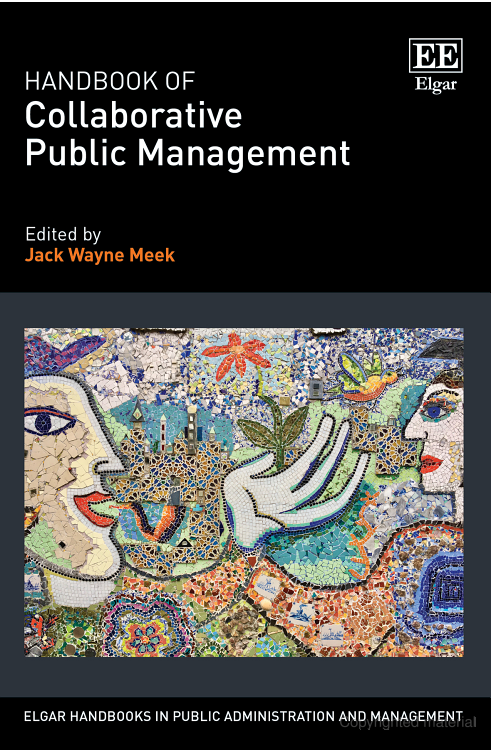
Local Governments and Shared Services: Insights on Institutional Mechanisms, Partners, and Purpose
book chapter by Jun Li, José Sánchez, Jered B. Carr, Michael D. Siciliano
Abstract: Local governments seek collaboration mechanisms to address increasingly constrained fiscal environments characterized by shrinking revenues and growing demand for services. Though research on interorganizational networks has increased rapidly in the past decade, critical gaps in our understanding of local public service networks remain. This study looks to address existing gaps by answering three critical questions: 1) How are actors connected with each other in these networks? 2) Who do they choose to partner with? and 3) What are the specific and shared objectives they pursue? To answer these questions, we conduct a content analysis of a random sample of 500 interlocal and inter-sector agreements from 10 policy areas over a 10-year period. The results of the content analysis revealed three important findings. First, the most common institutional forms to collaborate are service contracts, joint operations, and new joint entities, while the least common institutional mechanism is joint facilities. Second, city and county, general- and special-purpose government, and cross-sector collaborations are the most frequent groupings found across the service areas. However, collaborations between cities are rare in our sample. Finally, each agreement was coded based on its objective. We find that agreements focus more on the expansion of public access to the service rather than increased efficiency or effectiveness. Based on our findings, we offer several avenues for future research.
Analyzing the Effectiveness of Networks for Addressing Public Problems: Evidence from a Longitudinal Study
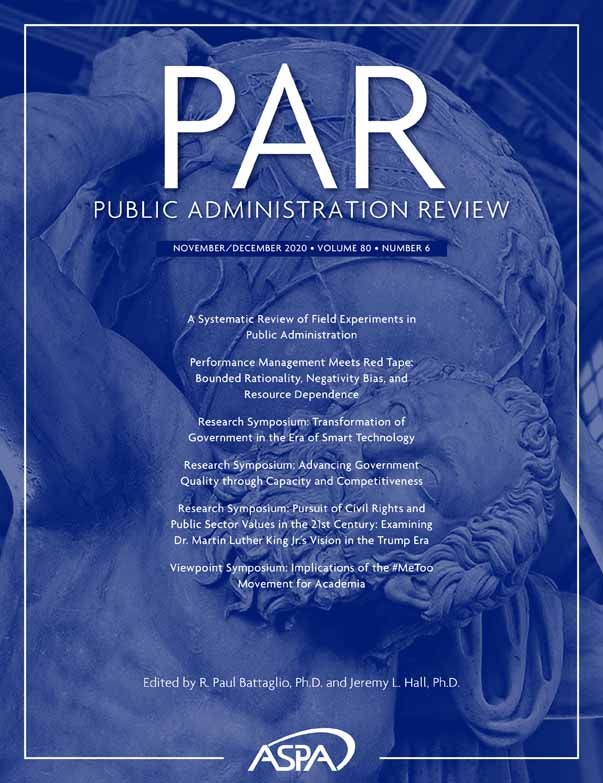
Analyzing the Effectiveness of Networks for Addressing Public Problems: Evidence from a Longitudinal Study
by Michael D. Siciliano, Jered B. Carr and Victor G. Hugg
Abstract: While scholars and practitioners frequently laud the potential of networks to address complex policy problems, empirical evidence of the effectiveness of networks is scarce. This study examines how changes in network structure (centralization and transitivity), network composition (sector diversity and geographic range), and tie properties (stability and strength) influence community level outcomes. Relying on a statutory requirement in the state of Iowa requiring local governments to file all instances of intergovernmental and intersectoral collaboration, we measure collaboration networks in 81 counties over 17 years in the areas of crime and economic development. Using fixed effects models, we examine how changes in the structure and composition of these county‐level networks affect substantive policy outcomes. Our findings indicate that network properties matter, but that the specific properties may be context dependent. We find network centralization and stability are stronger predictors of crime while network composition is more strongly associated with economic development.
Mechanisms of Network Formation in the Public Sector: A Systematic Review of the Literature

Mechanisms of Network Formation in the Public Sector: A Systematic Review of the Literature by Michael D Siciliano, Weijie Wang, Alejandra Medina
Abstract: This article provides a systematic review of the network formation literature in the public sector. In particular, we code and categorize the theoretical mechanisms used in empirical network research to motivate collaboration and tie formation. Based on a review of the 107 articles on network formation found in 40 journals of public administration and policy from 1998 to 2019, we identify 15 distinct theoretical categories. For each category, we describe the theory, highlight its use in the literature, and identify limitations and concerns with current applications. Overall, we find that most studies rely on a similar set of general theories of network formation. More importantly, we find that most theoretical mechanisms are not well specified, and empirical tests are often unable to directly assess the specific underlying mechanism. The results of our review highlight the need for our field to embrace experimental designs, develop panel network datasets, and engage in more network-level research.
Public Service - Function Types and Interlocal Agreement Network Structure: A Longitudinal Study of Iowa

Public Service – Function Types and Interlocal Agreement Network Structure: A Longitudinal Study of Iowa by Victor Hugg
Interlocal service delivery networks have become a prominent subject within the urban governance literature, with significant scholarly attention being focused on the political, legal, and demographic characteristics that influence an organization’s decision to join a collaboration network. However, despite being a theoretically significant factor, few analyses have examined the role that service-function type plays in shaping these networks. This research note replicates and extends previous tests of the hypothesized relationship between service-function type and network structure by relying on a comprehensive 25-year data set of interlocal agreements from the state of Iowa. Using hierarchical linear modeling, the positive relationship between networks of system maintenance service-functions and network centralization is confirmed after controlling for the significant moderating effect of time.
Benchmarking Local Government Services: Applying an Issue-Based Approach
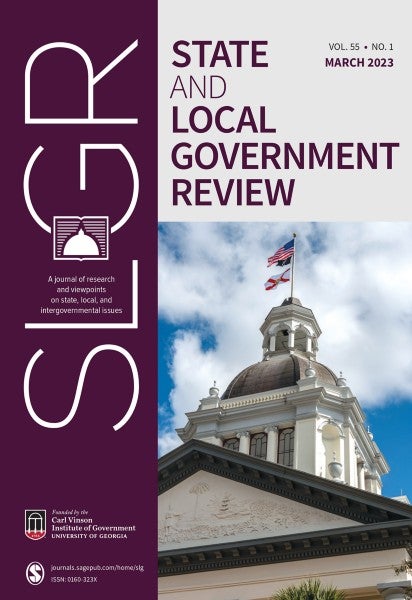
Benchmarking Local Government Services: Applying an Issue-Based Approach by Saman Shafiq , Evgenia Kapousouz,
Michael D. Siciliano, and Jeffrey M. Gawel
Conventional benchmarking methods that rely on pre-existing measures may not be best suited for many of the challenges confronting local service delivery. This paper introduces an issue-based benchmarking method and describes the six-stage cycle implemented by a benchmarking collaborative in the Chicagoland region. Each stage of the process is discussed to highlight the approaches and tools used to identify the most salient issues and relevant performance measures. In the final section, we reflect on the changes we made to the process and overall lessons learned that we believe will help others attempting to engage in similar benchmarking efforts.
Measuring Accountability in Interlocal Agreements Between Indigenous and Local Governments
Measuring Accountability in Interlocal Agreements Between Indigenous and Local Governments
Zac Spicer, Tyler Girard, Jen Nelles, Christopher Alcantara
Interlocal agreements are becoming a popular policy tool for facilitating intergovernmental coordination and cooperation in Canada and the United States. Indigenous and local governments are also turning to these agreements despite long histories of colonialism, exploitation and dispossession by the settler State toward Indigenous communities. To what extent do interlocal agreements between Indigenous and municipal governments require stringent accountability measures to facilitate intergovernmental coordination? Using a hierarchical Bayesian item response theory model, we explore this question by analyzing 317 interlocal agreements between Indigenous and municipal communities in Canada. We find that accountability strength varies significantly across agreements, contrary to our expectation that accountability requirements would be strong across agreements due to the long history of colonialism. We also find that some of the variation may be a function of the policy area addressed by each agreement, although this finding is likely the result of measurement uncertainty in our estimates.